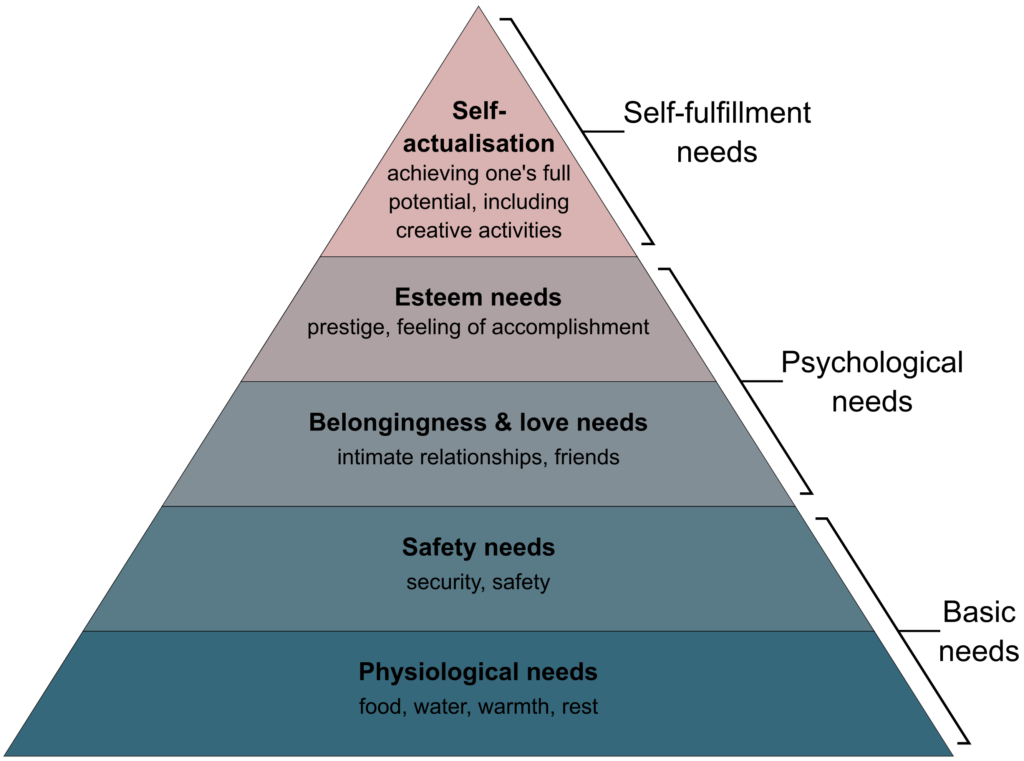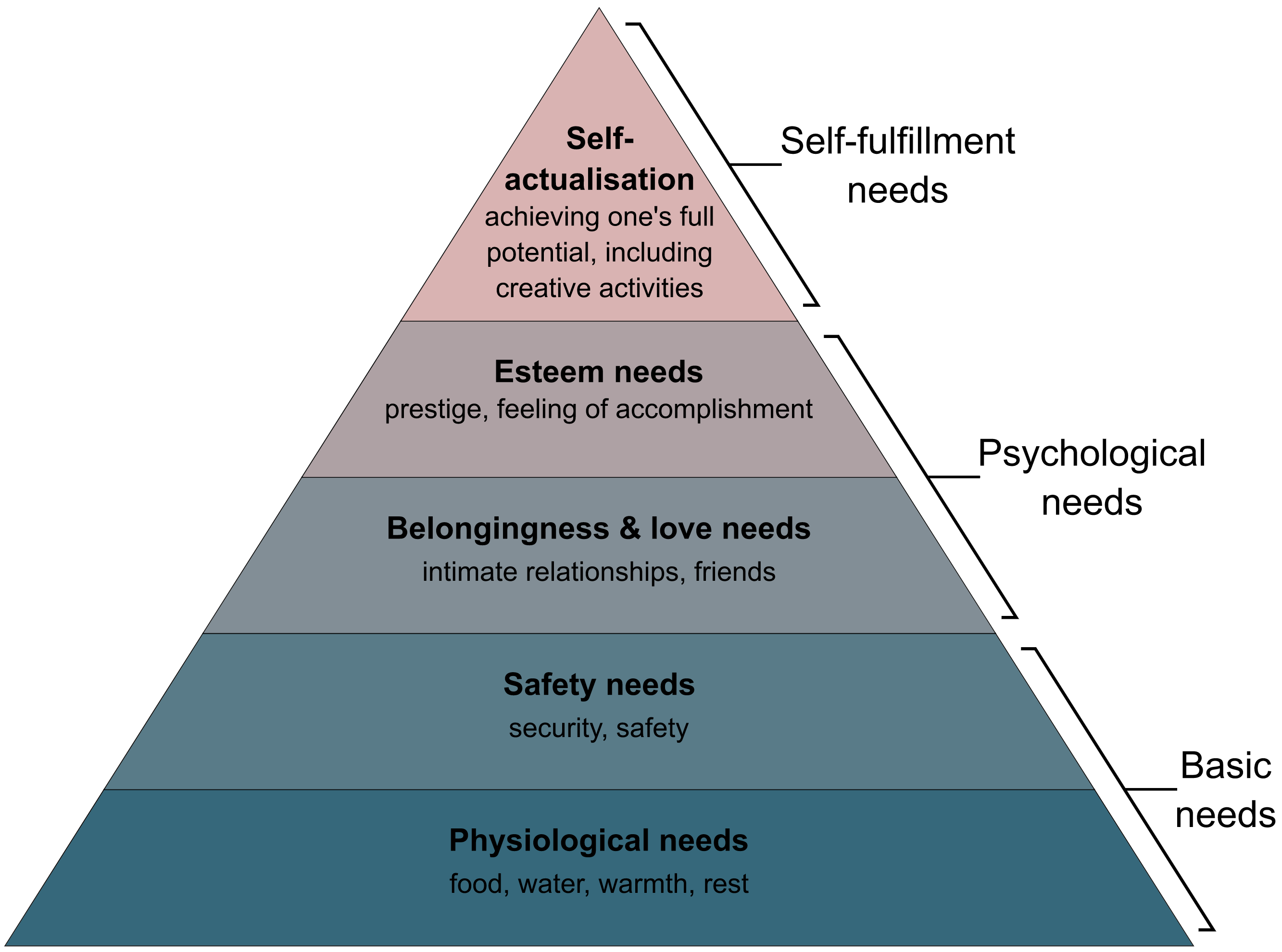Recently I listened to an interview of Cody Friesen, the Founder and CEO of Source (formerly known as Zero Mass Water). Source builds hydropanels that can efficiently extract surprisingly large quantities of drinking water from the air. Much like Solar Panels disrupt the entire supply chain for electricity, hydropanels have the potential to do that for water.
During the interview Friesen noted how his product fits in Maslow’s Hierarchy of Needs as a basic Physiological Need – making it a super important product for humanity.
This got me thinking about Maslow’s Hierarchy, where products fit, what it means, and how we can leverage this in our product thinking.

Guaranteed access to quality drinking water is a fundamental human right. But it is also humanity’s greatest challenge.
Product Perspectives
As a general rule for product people, I recommend identifying ways to push yourself to look at the world through different perspectives. Using Maslow’s Hierarchy of Needs is one such tool you can use to force this and be intentional about it.
Very quickly we can take out products and get a sense of where they fit within Maslow’s Hierarchy. The Source hydropanels fits into the absolute bottom of the hierarchy.
Where does your product fit?
Self-Actualization: Products that develop your creativity or enhance your spirit (e.g. Calm, TikTok, WHOOP)
Esteem Needs: Products that drive sense of prestige or accomplishment (e.g. Tesla, United Global Services, Amex Black Card)
Belongingness: Social media, dating, community products and services (e.g. Meetup, Bumble, Facebook, Clubhouse)
Safety Needs: Products that keep you and your family safe and secure (e.g. Ring, Nest, NordVPN)
Physiological Needs: Basic essentials we need to sustain life and related products (e.g. Purple, UberEats, Beyond Meat, Source)
When evaluating your product you may quickly realize that your product does not fit neatly into one level in the hierarchy. Instead, it may be that different features you have in your product fit at different levels of need.
Take Apple Watch as an example. At first, this was definitely a product that drive Esteem Needs. In fact, most products that have an initially limited market of early adopters are probably somehow addressing this type of need. Then you have features of this product, like the ECG, Heart Rate, and Health that can help drive self-actualization for athletes while they may be addressing critical safety needs for other consumers.
How do these perspective impact your product strategy?
I believe that you can discover opportunities for pattern matching by looking for other products addressing the same level of need. For example you may be building yet another task management tool. Where does this fit in the level of human needs?
On a marketing angle you can look at how a product like Superhuman focuses on self actualization, optimizing the talents of the individual user with managing their email inbox. This approach has led to a sustainable adoption growth with a monthly price tag that is entirely non-competitive with free and nearly free email services.
Most email services focus on just getting work done. That is really focusing on the human need to feel a sense of accomplishment (esteem). Similarly, most task management tools are simply about getting stuff done.
Superhuman demonstrates there is a market for both approaches and that picking one, will help you focus your product investment and go-to-market decisions.
Going back to Source water example, you can see that they are on social mission to fulfill a basic human need for water. By their account there are well over a billion people in the world that do not have easy access to a safe and reliable source of water. However, this is also a very capitalist enterprise. Everyone in the world needs water to survive. Everyone does not need to be a rockstar at managing their email load.
How does this impact product strategy? By identifying needs lower down in the hierarchy that you can address, you expand the potential addressable market. You may have to get your price points lower, so your innovations need to focus on cost savings and enabling an excellent distribution reach.
Perhaps your task management tool is not solving the need of water but you may find features that could move it down to safety. Take for example, the prestige that Apple iPhones brought initially. Now as they are more widely distributed, Apple has brought in features like the HealthKit and Find My (People) that move into Safety.
How can you leverage this for personal development?
I think that thinking through Maslow’s model as part of your career development can be a useful exercise. In particular, you should ask yourself what type of products do you want to be part of building.
- Products that help a small percentage of the population be their absolute best possible selves?
- Products that focus on the broad psychological needs of individuals and society that can better life for a majority of us?
- Products that tackle the toughest global problems that impact every single person on the planet?
Nothing will fit perfectly into these buckets as you can see, but have this sense of direction can help you focus on the skills you need to develop, the markets you need to follow, and the companies you should target on your next job search.
Conclusion
Maslow’s Hierarchy is a great way to view the world and step out of your day-to-day. Using models like this help force us into different patterns of thinking that can unlock new discoveries and approaches that may have other be missed.
